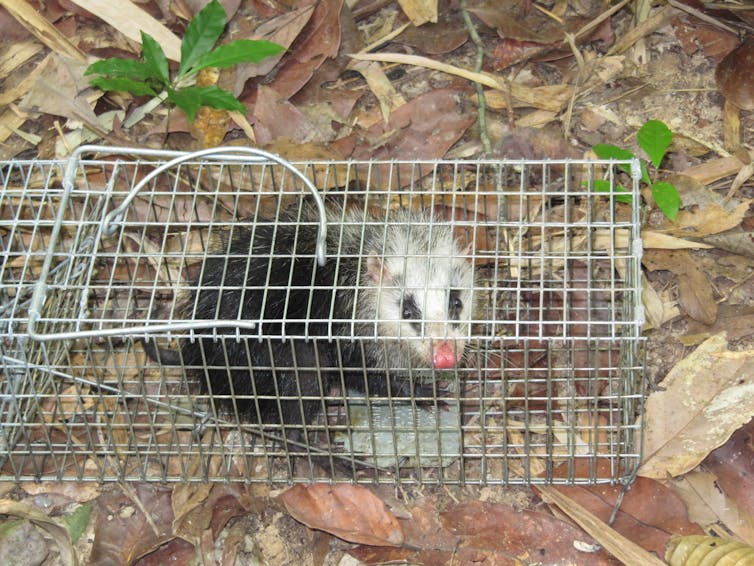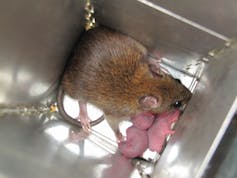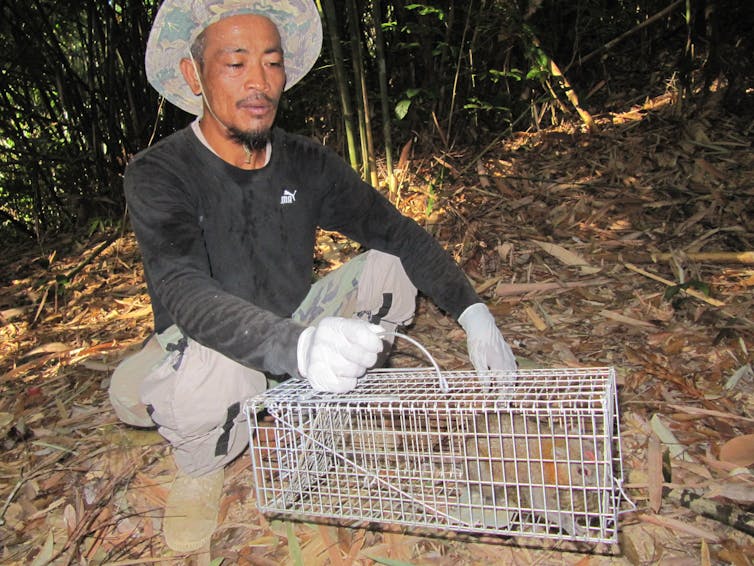Humans have already felled or razed about half of the world’s forests, and much that remains has been fragmented into small pieces. Research my colleagues and I published in Science today shows that when forests become fragmented, native mammals rapidly disappear, adding to the evidence that deforestation has a devastating effect on biodiversity.
Biggest threat
The fragmentation and loss of native habitats is regarded by many ecologists as the number one threat to Earth’s biodiversity—worse than climate change, pollution and overharvesting, for instance. It’s the reason I’ve spent most of my career studying habitat fragmentation and its impacts on nature, in places like north Queensland, the Amazon and the Congo Basin.
In Science, my colleagues and I describe our most recent attempt to understand the consequences of habitat fragmentation—for native mammals in Thailand. It’s difficult not to be jolted by our findings.
What makes our Thai study special is that, in effect, we watched nature collapse right before our eyes. The habitat fragments we studied were actually islands, created 25 years ago when a large hydroelectric reservoir was constructed.
The larger animals—deer, tigers, elephants and the like—quickly vanished from the islands but, at least initially, a diverse assemblage of smaller mammals remained. This included native squirrels and other rodents, treeshrews and quirky animals called moonrats.

Ecological collapse
But, as my colleague Tony Lynam initially discovered, the islands were a place of ecological ruin. Just a few years after the reservoir was created, native mammals had nearly vanished from any island under 10 hectares in area.
By two decades later, things were even worse. Another colleague, Luke Gibson, found the islands were virtually ecological deserts. Hardly any native mammals remained at all — even on the largest islands, which were over 50 hectares in area.
However, one species was found on all of the islands, and often in great abundance. It was an invader — the Malayan field rat.

The Malayan field rat is a lot like the common black rat — a highly adaptable species that lives near human settlements, agriculture and other severely disturbed environments. Black rats have been introduced inadvertently to islands around the world, where they’ve killed off scores of native bird species and other vulnerable wildlife.
The exotic Malayan field rat had invaded the islands, and given its great fecundity and generalised diet — it’s practically a walking rubbish bin — it evidently helped to wipe out the remaining native mammals.
One-two punch
Our study has two key implications. For starters, it shows just how severely habitat fragmentation can affect biodiversity when the surrounding habitats are severely inhospitable. This includes not just fragments encircled by water but also those embedded in intensive agriculture, such as large monocultures of soy, sugarcane, rice and oil palm, which are hostile to most wildlife and sustain few native species.
In addition, our study reveals that environmental synergisms — the one-two punch of interacting ecological threats — can be devastating. The mammals we studied suffered not only from the deleterious effects of population isolation, but also from the invading rat competitor.
This is a big concern because foreign species are invading fragmented and human-disturbed ecosystems across the planet. Some of those invaders — such as rats, cats, foxes, fire ants, brown tree snakes and fire-promoting weeds, to name just a few — can completely disrupt ecosystems and devastate their biodiversity.
Worldwide, surviving forests will continue to shrink and be fragmented this century as we struggle to sustain a projected 11 billion people. Unless we slow the destruction, we’ll see further collapses of ecosystems.


